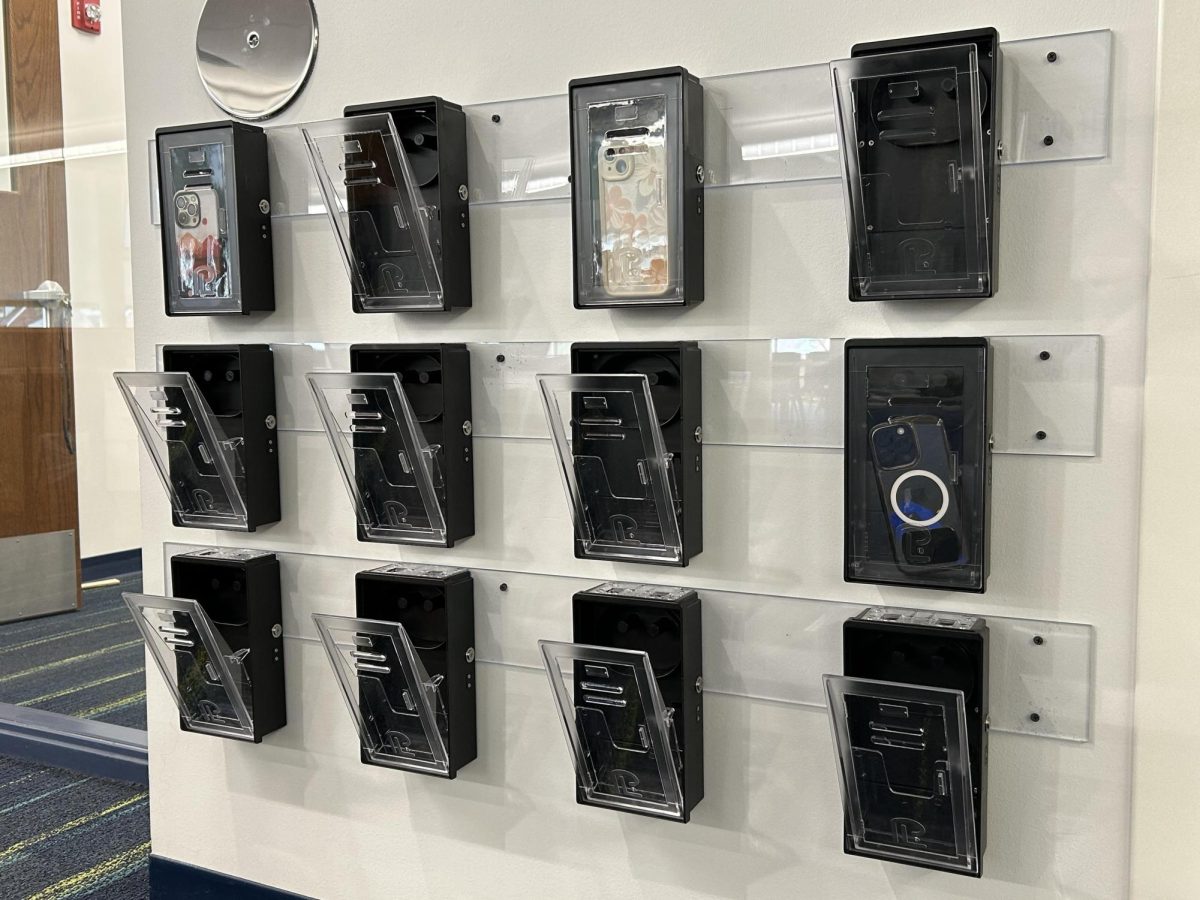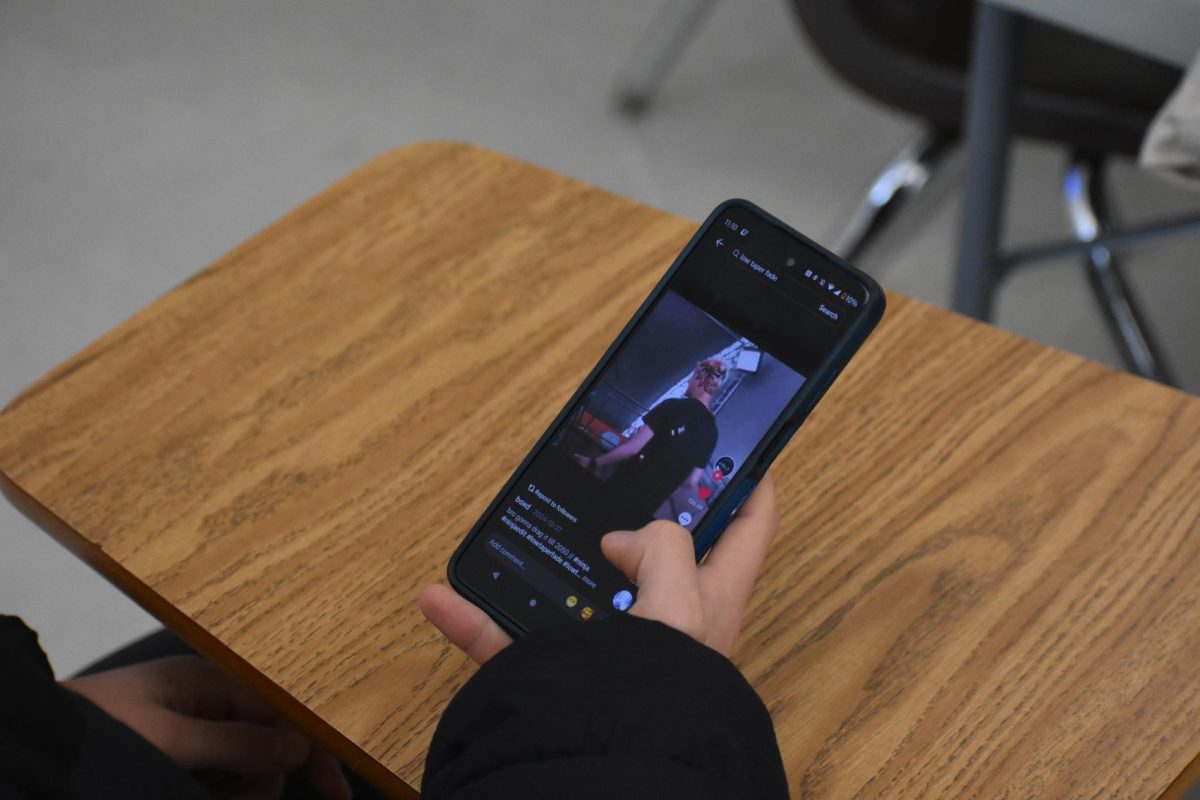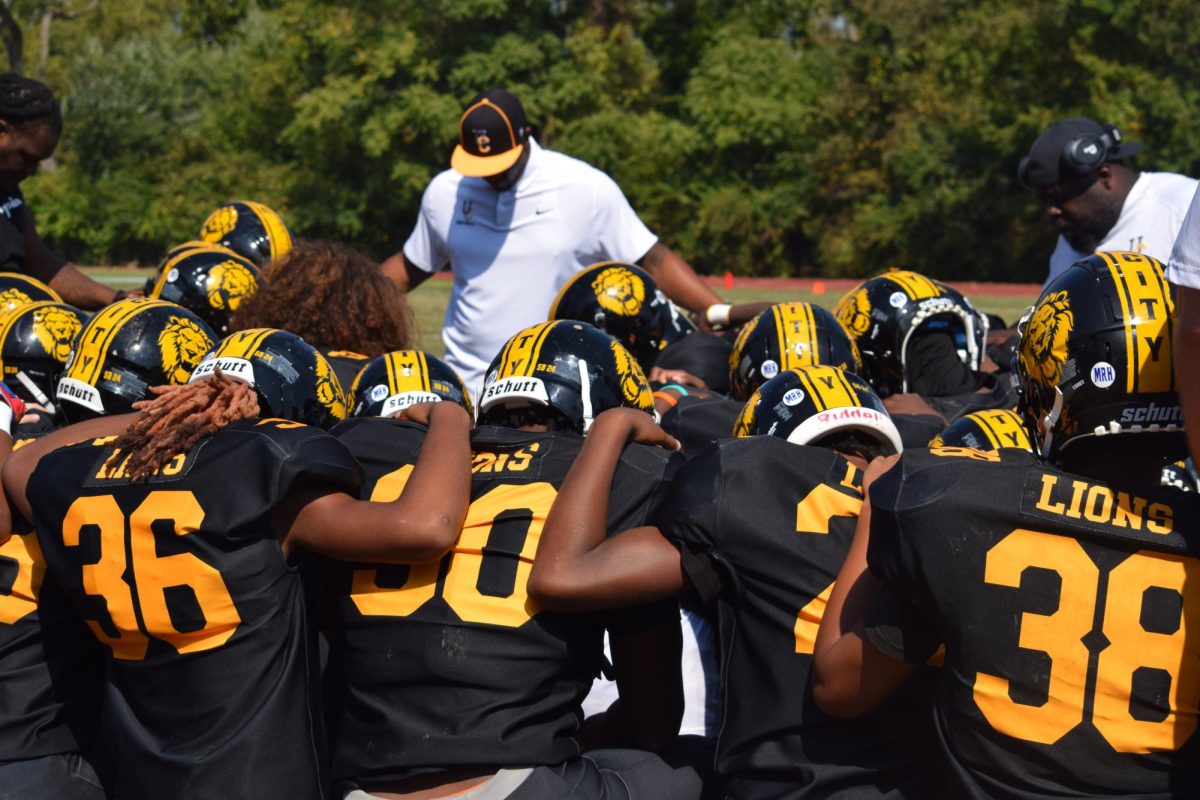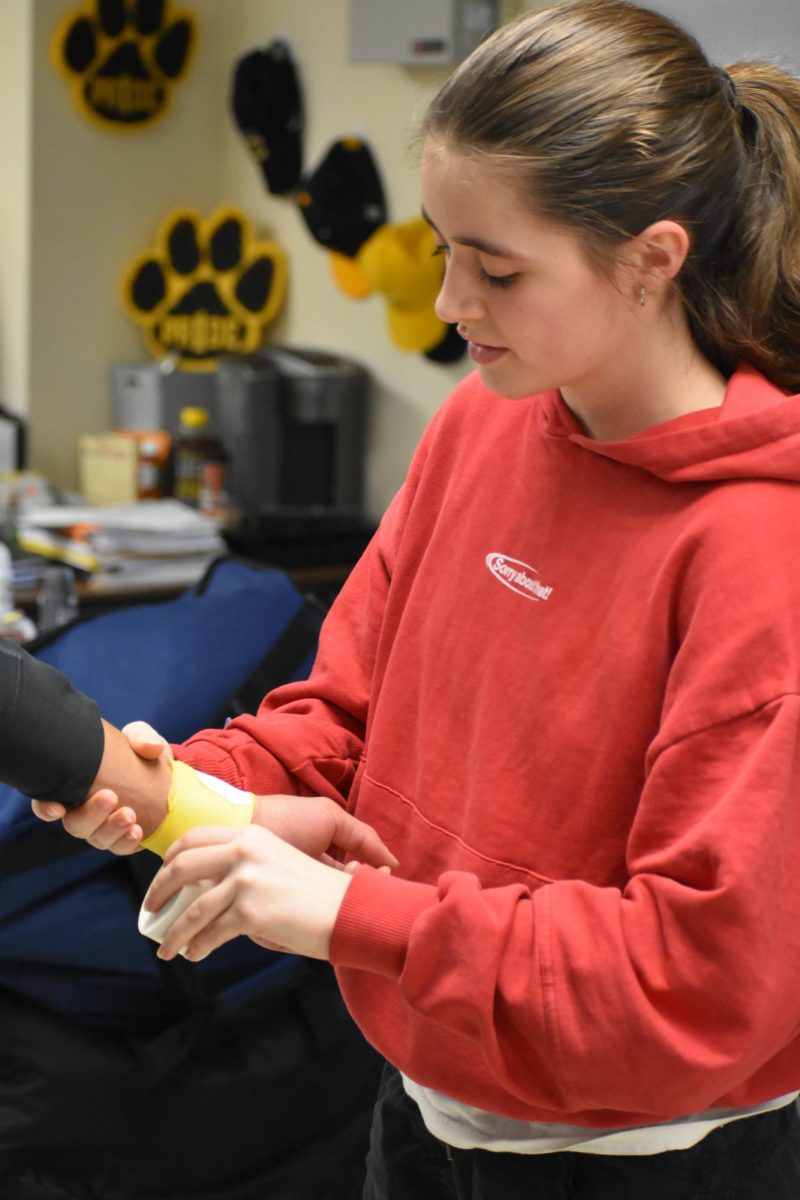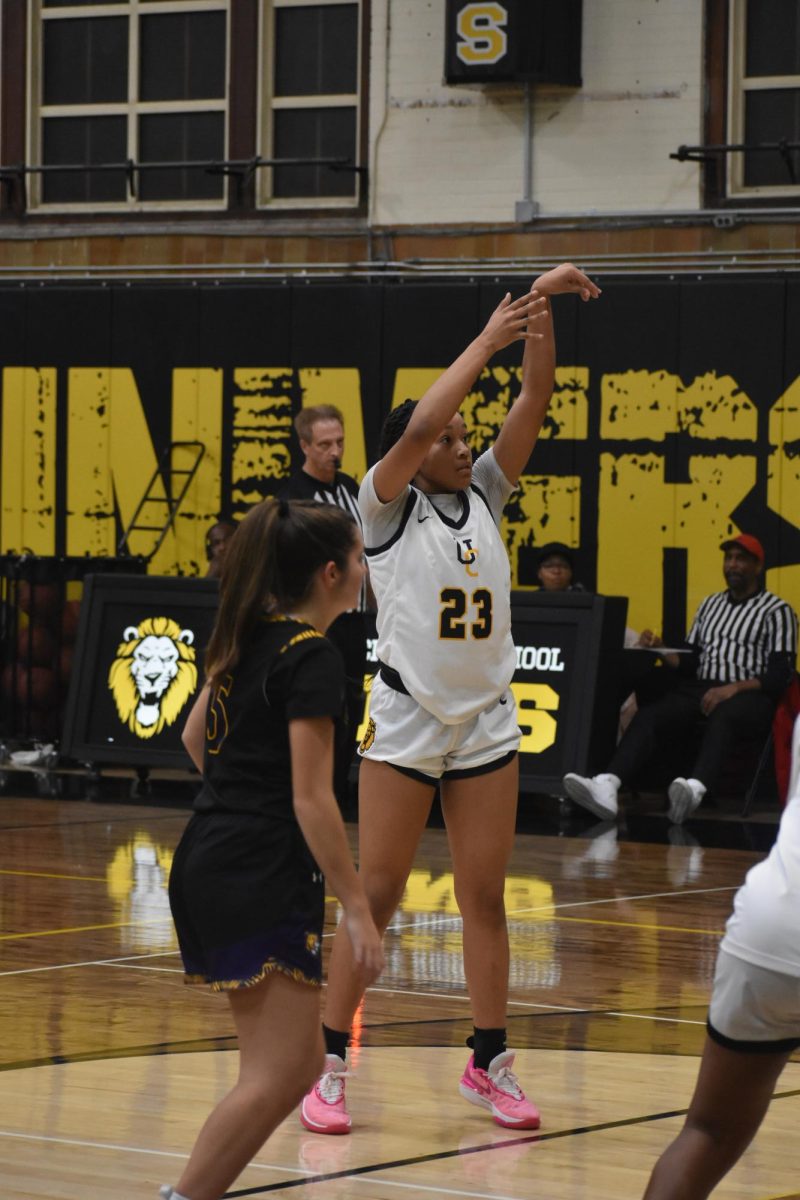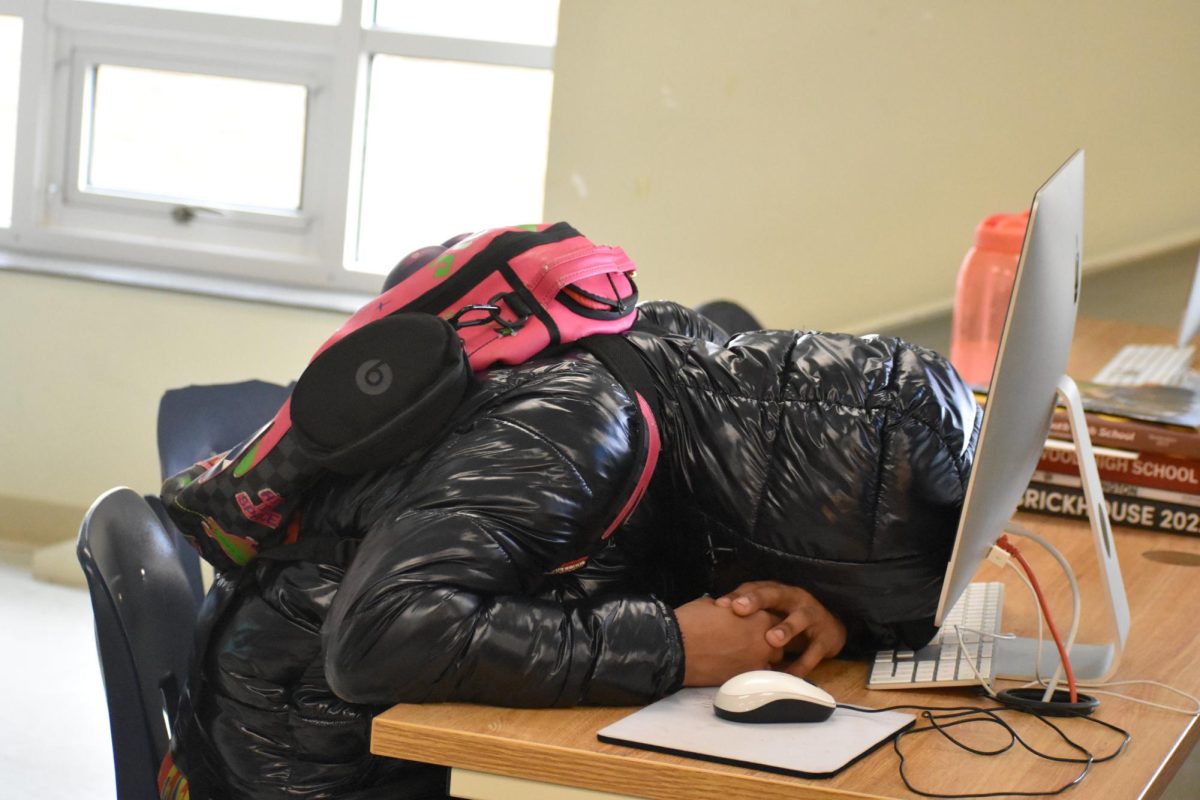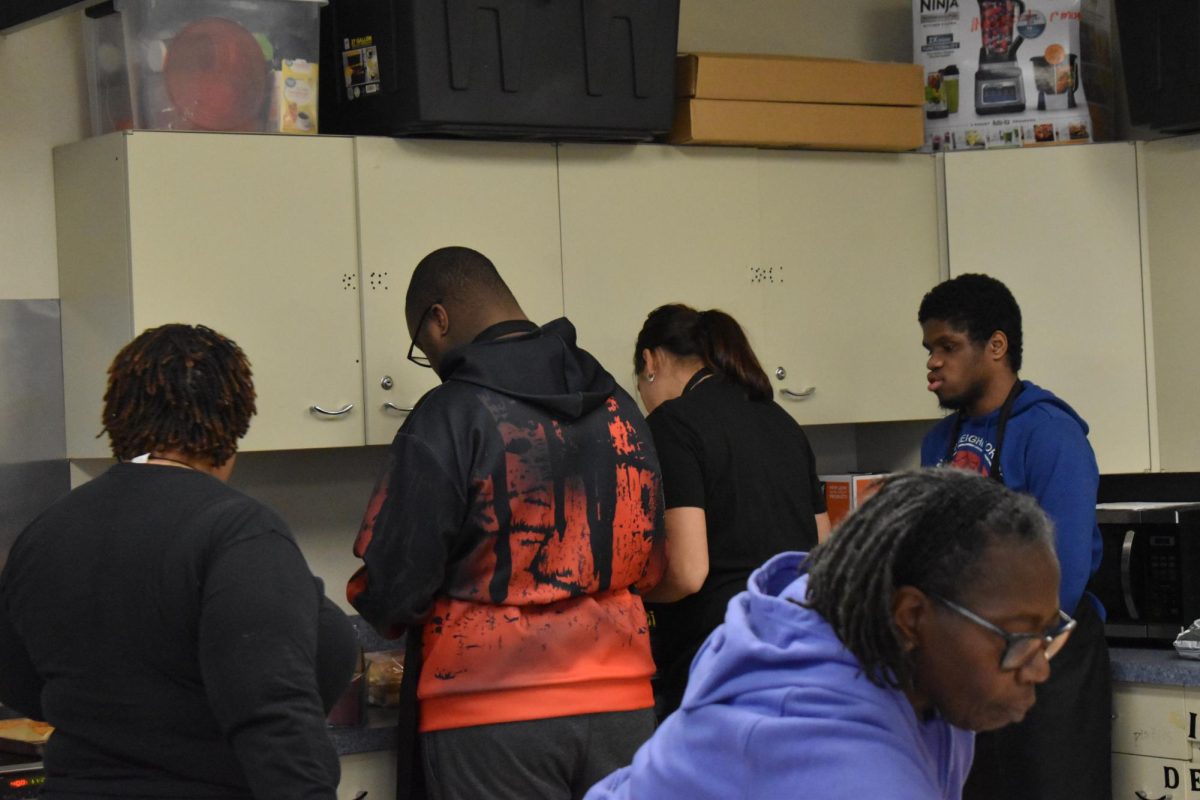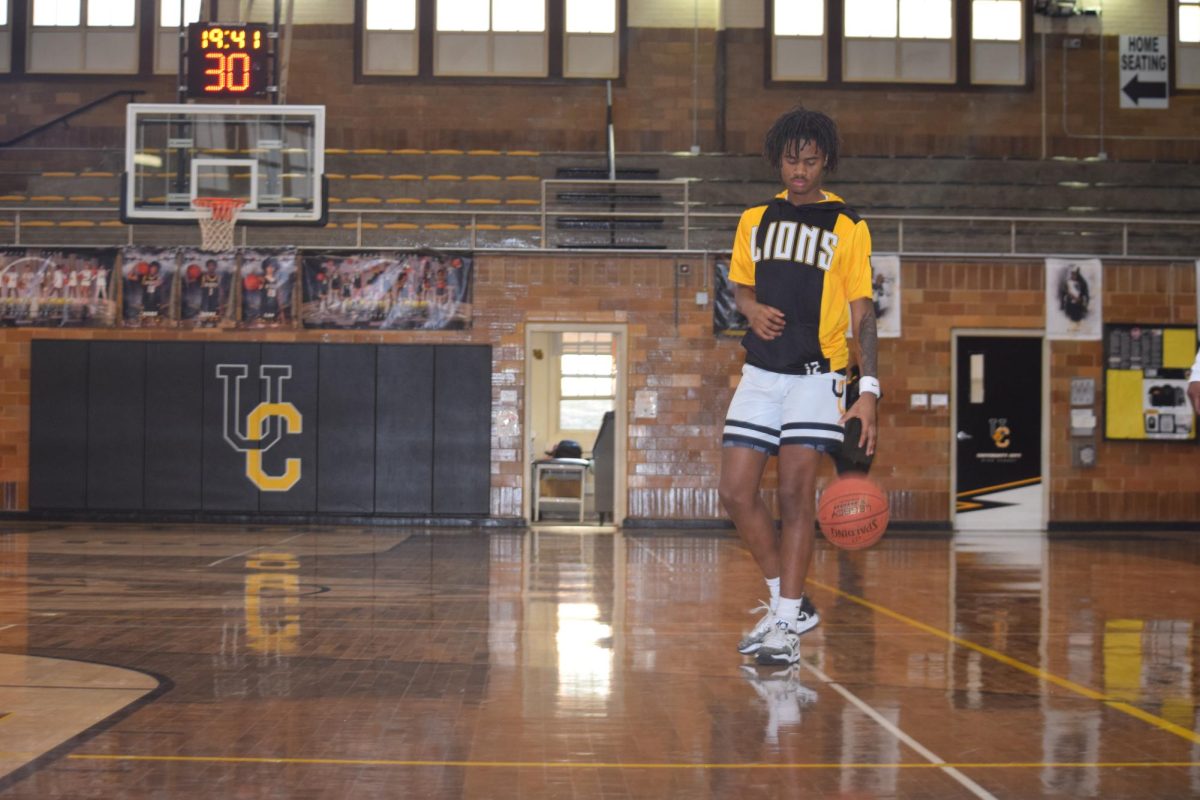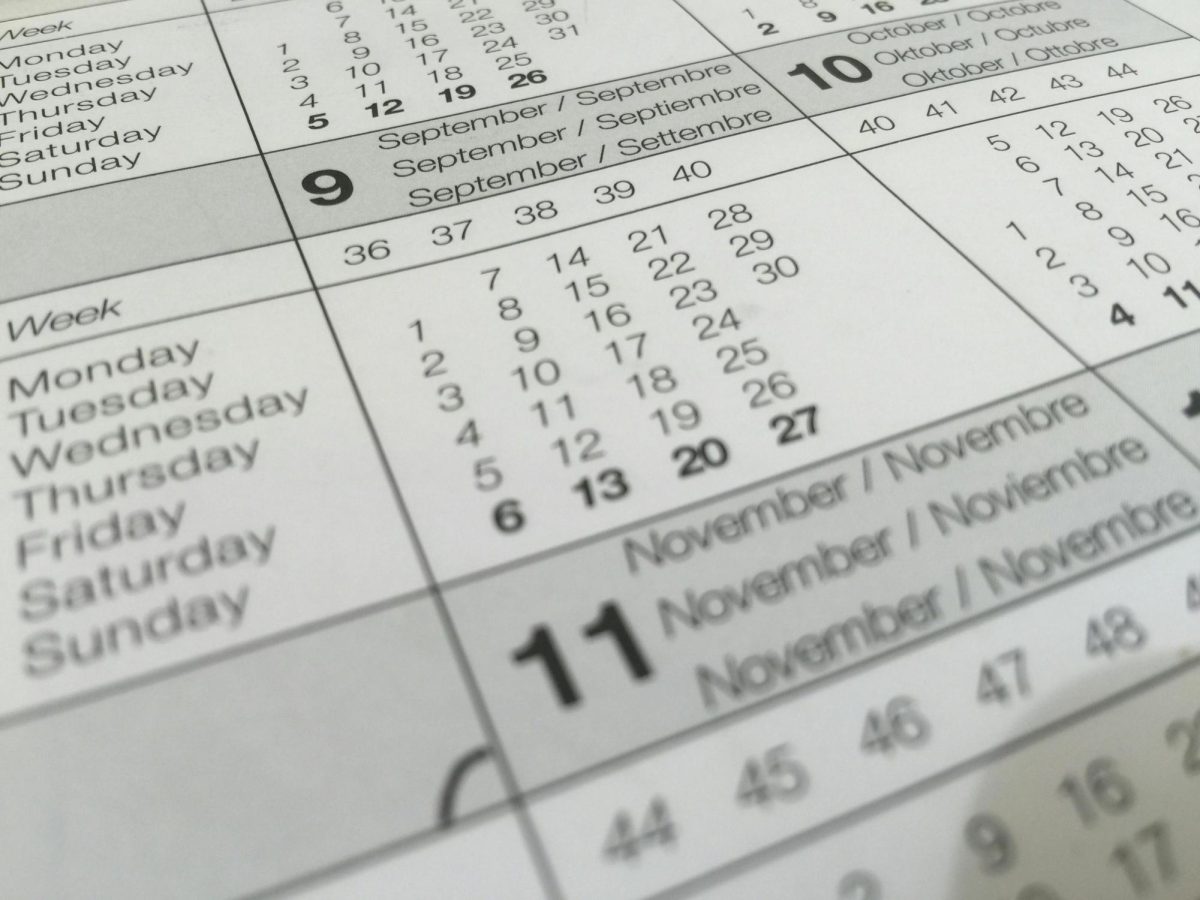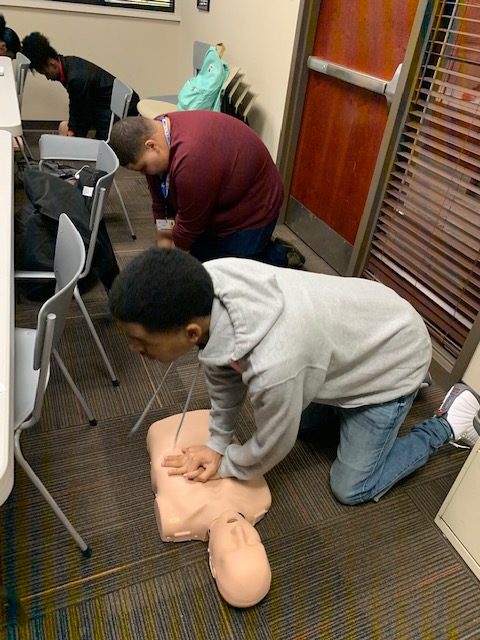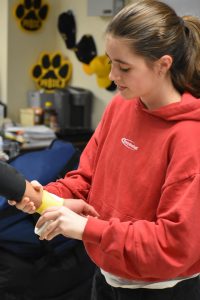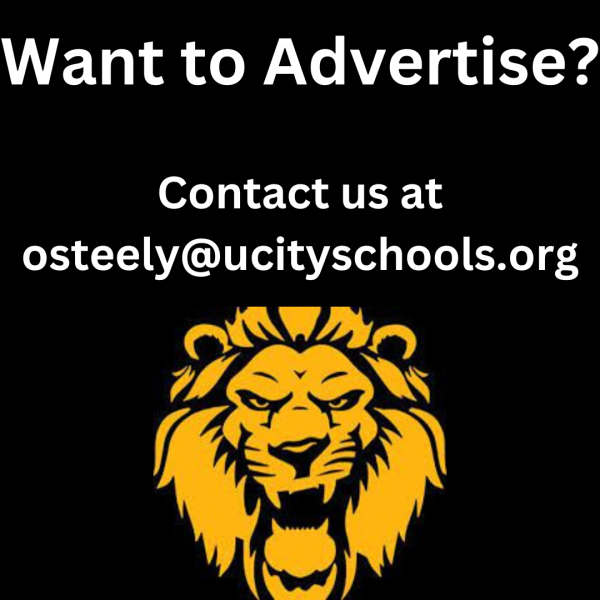Students use EMT program as pathway to career, college
At their first session, Christian Hollloway and Timothy Dailey, seniors, perform CPR on a dummy as part of their physical test to complete their CPR certification. “So far it’s been super exciting just based on the things we’ve been told we will do and the responsibility we will have,” Dailey said.
February 4, 2020
When you graduate, options are important. A small group of students at U. City will not only receive their high school diploma on May 11, but will also be eligible to take the Emergency Medical Technician (EMT) licensure exam. If they pass, they will virtually be guaranteed a job making almost $30,000 a year.
“The benefit [of] graduating with an EMT license is going right to work,” Susan Hill, Director of PK-12 College and Career Readiness and Access, said. “It’s also the prerequisite for a paramedic license and employment with the Fire Department.”
According to Hill, the School District of University City has launched a new Career and Technical Educational (CTE) program in partnership with the U. City Fire Department (UCFD).
“Students are there two days a week—Tuesday and Thursday—8 am to 2 pm,” Hill said.
According to Hill and Clarence Ware, Adult Education Coordinator, courses are taught by University City Fire Department instructors and include career exploration. Also dual credit preparation classes for course certifications to enter the medical field.
“Taking this class gets us closer to things like becoming a paramedic, RN, or even a doctor,” Timothy Dailey, senior who participates in the program, said.
Students who successfully complete the course with a “C” or better will receive dual credit from St. Louis Community College. When a student graduates, the students will be prepared to enter the workforce as an EMT or may pursue a paramedic and then fire fighting career at St. Louis Community College.
“It gives us medical-based knowledge that can save lives,” Dailey said. “After completing this class, we’ll be able to graduate with a high-quality career and a good chance of expanding our education, especially in the medical field because we’ll have a strong base for medicine before we attend a college.”
Much of the program is hands-on training, although Hill and Ware said that topics for this course include medical legal considerations, basic anatomy and physiology, patient assessment, airway adjuncts and oxygen administration, cardio pulmonary resuscitation (CPR), managing traumatic injuries as well as medical emergencies, hazardous materials and ambulance operations.
“It’s broken up into lectures, labs and tests, so a good portion of it is hands on and we’ve already been CPR certified,” Dailey said. “Before we graduate, we need at least 60 hours of call time which includes being the EMT who responds to emergency calls.”

